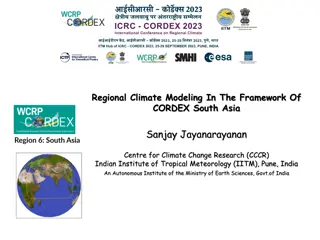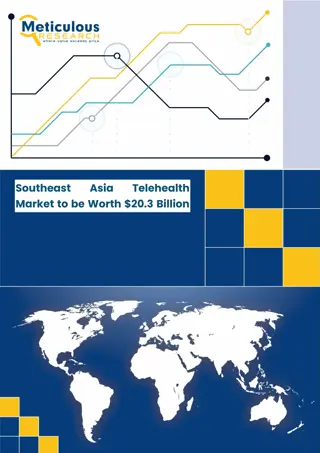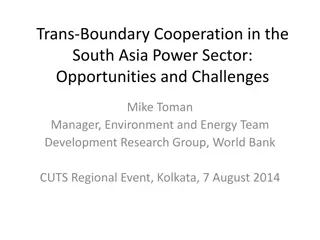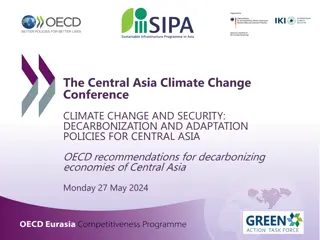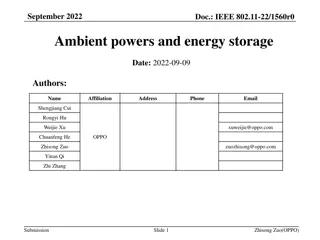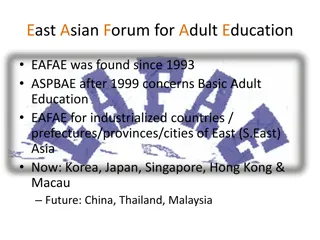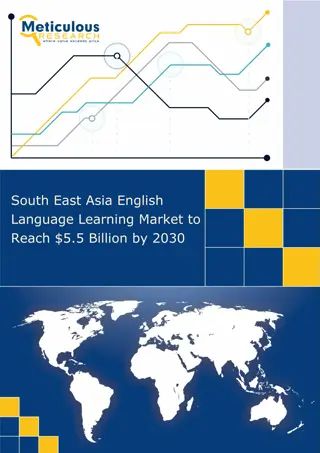
Energy Security in South East Asia: Challenges and Trends
Explore the dynamics of energy security in South East Asia, focusing on oil reserves, production, consumption, and the region's reliance on imports. Discover insights from reports commissioned by the ERIA on energy security challenges and strategies in the region.
Download Presentation

Please find below an Image/Link to download the presentation.
The content on the website is provided AS IS for your information and personal use only. It may not be sold, licensed, or shared on other websites without obtaining consent from the author. If you encounter any issues during the download, it is possible that the publisher has removed the file from their server.
You are allowed to download the files provided on this website for personal or commercial use, subject to the condition that they are used lawfully. All files are the property of their respective owners.
The content on the website is provided AS IS for your information and personal use only. It may not be sold, licensed, or shared on other websites without obtaining consent from the author.
E N D
Presentation Transcript
World Energy and Security and South East Asia. Jeffrey David McGee Economics 5430
Asian Oil Reserves and Production. Proven Reserves in thousands of millions of barrels. 1995 Reserves Reserves 2005 2014 Reserves 2015 Reserves % of World Years Left China 16.4 15.6 18.5 18.5 1.1% 11.7 yrs Malaysia 5.2 5.3 3.6 3.6 .2% 14.2 yrs Vietnam 0.8 3.1 4.4 4.4 .3% 33.3 yrs Asia Pacific 39.1 40.8 42.6 42.6 2.5% 14 yrs Production in million tonnes. 2005 2010 2014 2015 Change % of total China 181.4 203.0 211.4 214.6 1.5% 4.9% Malaysia 34.6 32.6 29.8 31.9 6.9% .7% Vietnam 19 15.6 18.1 17.4 -3.4% .4% Total Asia Pacific 382.8 407.7 396.6 398.6 .5% 9.1%
Asian Consumption Oil consumption in millions of tonnes. 2005 2010 2014 2015 Change Total World Share China 328.6 447.9 526.8 559.7 6.3% 12.9% Malaysia 28 29.3 35 36.2 3.3% 4.4% Vietnam 12.2 15.6 18 19.5 8.4% .5% Japan 247.2 202.7 197.3 189.6 -3.9% 4.4% Total Asia Pacific 1150.6 1300.9 1442.2 1501.4 4.1% 34.7% BP Statistical Review of World Energy June 2016
Source for image: http://www.resilience.org/stories/20 15-06-23/asia-s-oil-consumption-at- record-high-while-production- peaked-in-2010/ Illustrating the divergence of oil consumption and production in Asia-Pacific from 1965-2013
Movement of oil Most of East Asia relies on imports from outside the area. The Middle East exported roughly 675.3 million tonnes of oil to East Asia in 2015. That is compared to 879.6 million tonnes of its total worldwide exports. China and other countries saw a larger then projected increase in importation partly due to production costs at home being higher then the prices for which countries could buy oil on the open market. Sources: BP Statistical Review of World Energy June 2016 and OilPrice.com: http://oilprice.com/Latest-Energy-News/World-News/Chinas-Oil-Import- Dependency-Deepens.html, http://oilprice.com/Energy/Energy- General/Growing-Asian-Oil-Demand-Could-Drain-The-Supply-Glut.html
Energy Security and South East Asia Many Countries in Asia are growing more concerned about energy security. In 2011 the ERIA or Economic Research Institute for ASEAN and East Asia commissioned a report titled STUDY ON THE DEVELOPMENT OF AN ENERGY SECURITY INDEX AND AN ASSESSMENT OF ENERGY SECURITY FOR EAST ASIAN COUNTRIES http://www.eria.org/RPR-2011-13.pdf It outlined 8 challenges for energy security. The 2 largest of 8 concerns was reliance on Middle Eastern Oil, and self sufficiency.
Concern 1) Self Sufficiency Currently Malaysia and Vietnam have energy self-sufficancy at 132.9% and 127% respectively. This allows for much of its valuable petroleum based energy sources to be exported to countries with greater energy demands such as China and Japan who stand at 93.1% and 18.7% energy self-sufficient respectively. Source Table 2-3 Quantitative Assessment of Energy Security Working Group (2011), Developing an Energy Security Index in Koyama, K. (ed.), Study on the Development of an Energy Security Index and an Assessment of Energy Security for East Asian Countries, ERIA Research Project Report 2011-13, Jakarta: ERIA, pp.7-47 As many Asian countries strive for self sufficiacy through alternative energy sources another avenue they turn to is sea exploration and the exploitation of off shore oil reserves.
Concern 2) Disruption of Middle Eastern supply chain. In 2014 China received 52% of its oil from the Middle East. SourceWhile Japan gets 83% of its oil from the Middle East. Source These large numbers leave China and Japan vulnerable to supply disruption due to war or civil conflict in the Middle East. Much of that oil enters East Asia through the Malacca Straits. And leaves the Middle East through the straits of Hormuz. The narrowness of these straits and the high traffic provides other challenges to the supply chain.
Conclusion East Asia s rapid growth and increasing reliance on Oil as an energy supplier with little corresponding growth in production has left much of the region unniquily vulnerable to volitility in the global supply of Oil. Parts of the vulnerability of East Asia include not only challenges from within East Asia but also threats from without including natural disasters, human caused accidents, as well as civil and international strife.


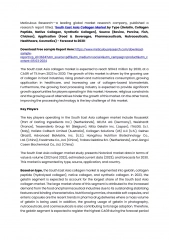
![READ⚡[PDF]✔ Emerging Space Powers: The New Space Programs of Asia, the Middle Ea](/thumb/21554/read-pdf-emerging-space-powers-the-new-space-programs-of-asia-the-middle-ea.jpg)

